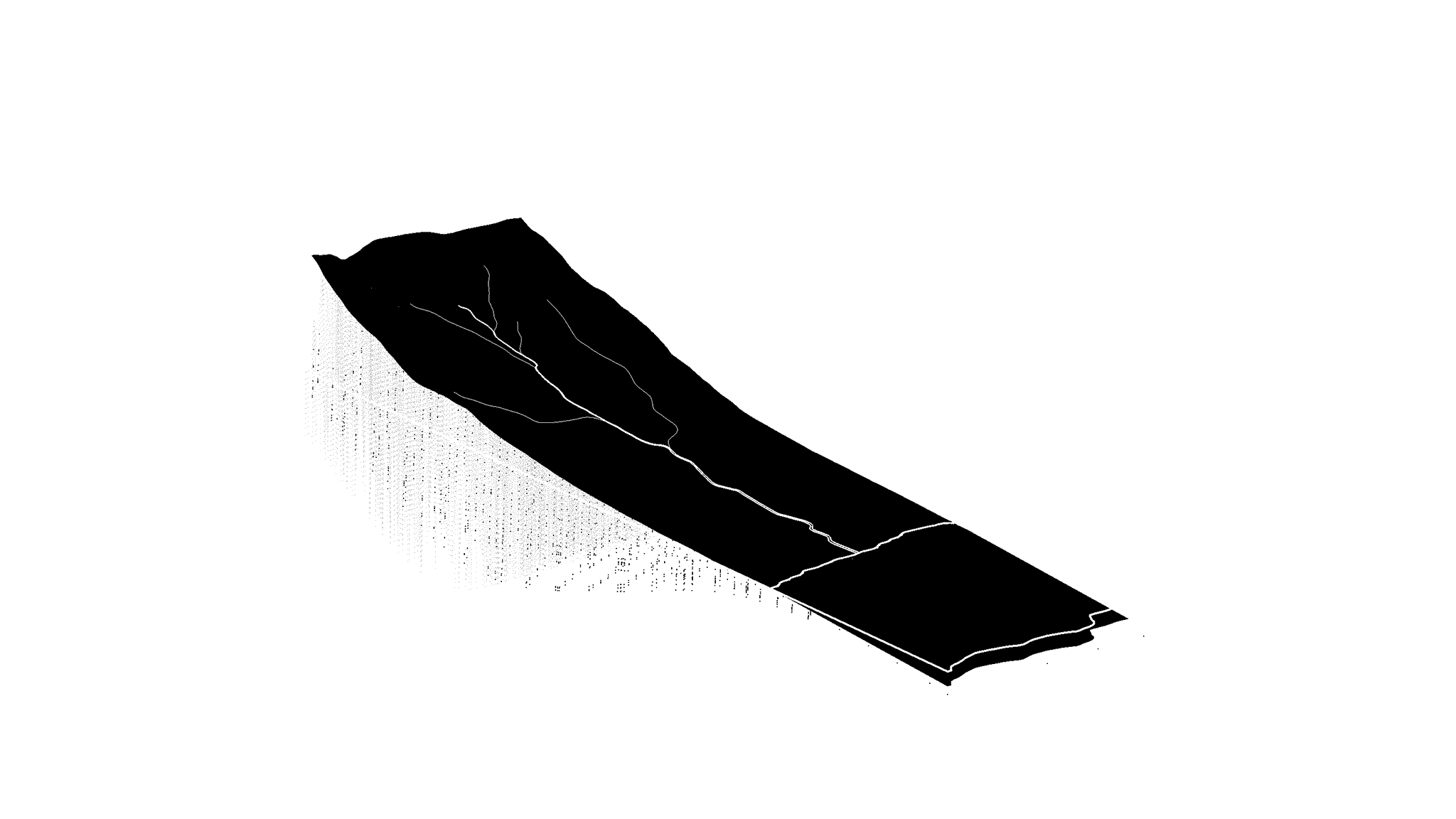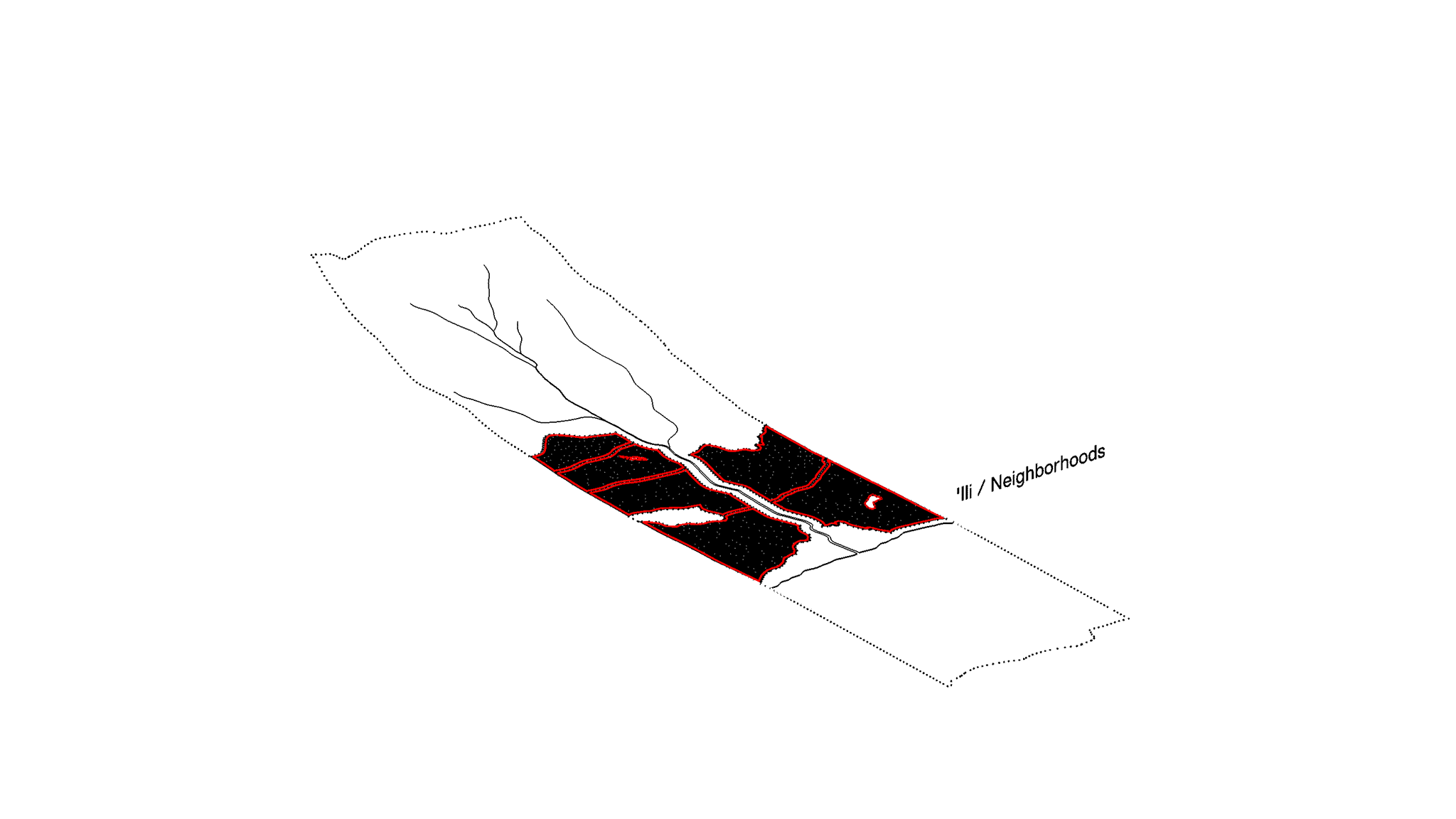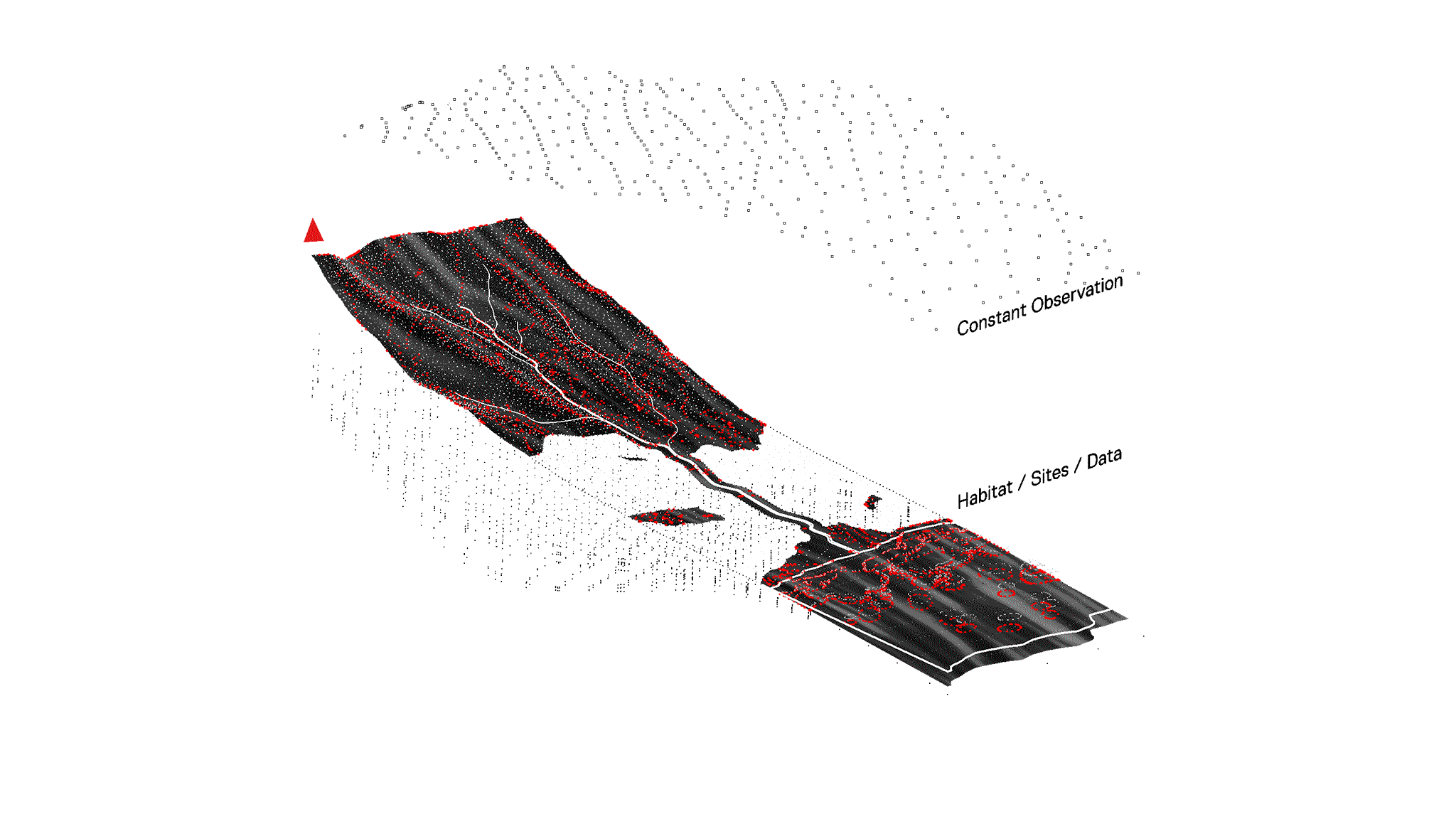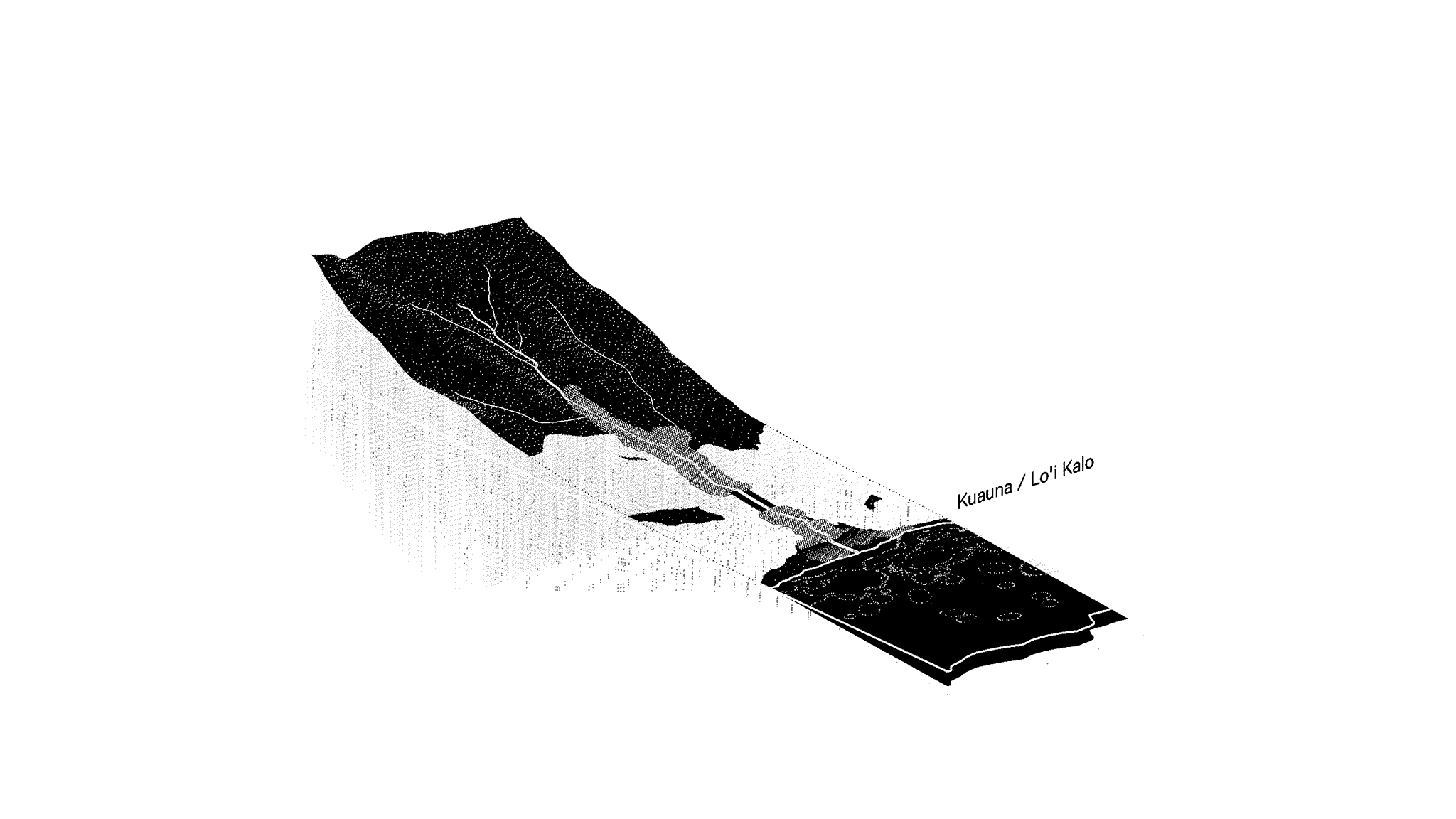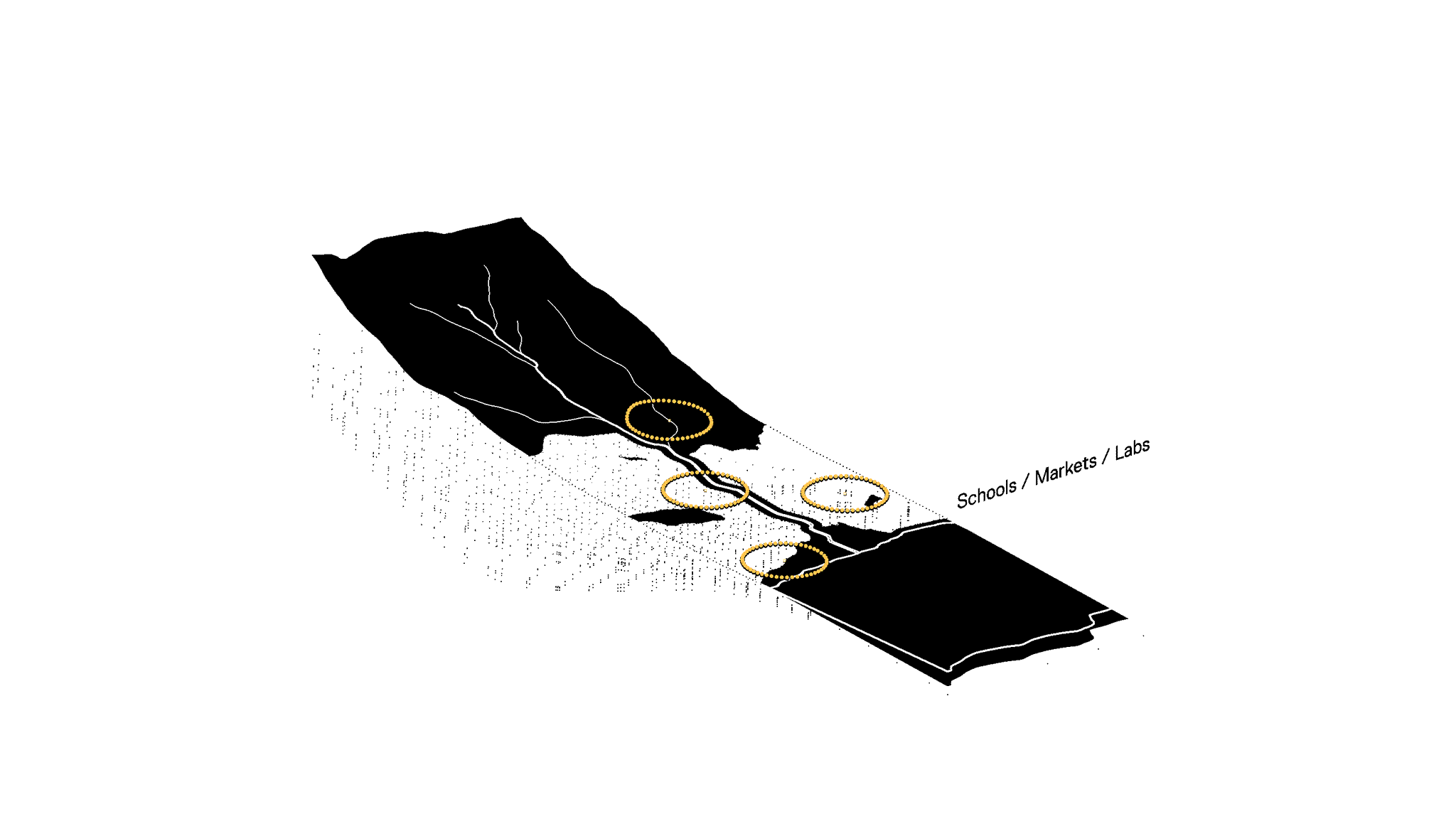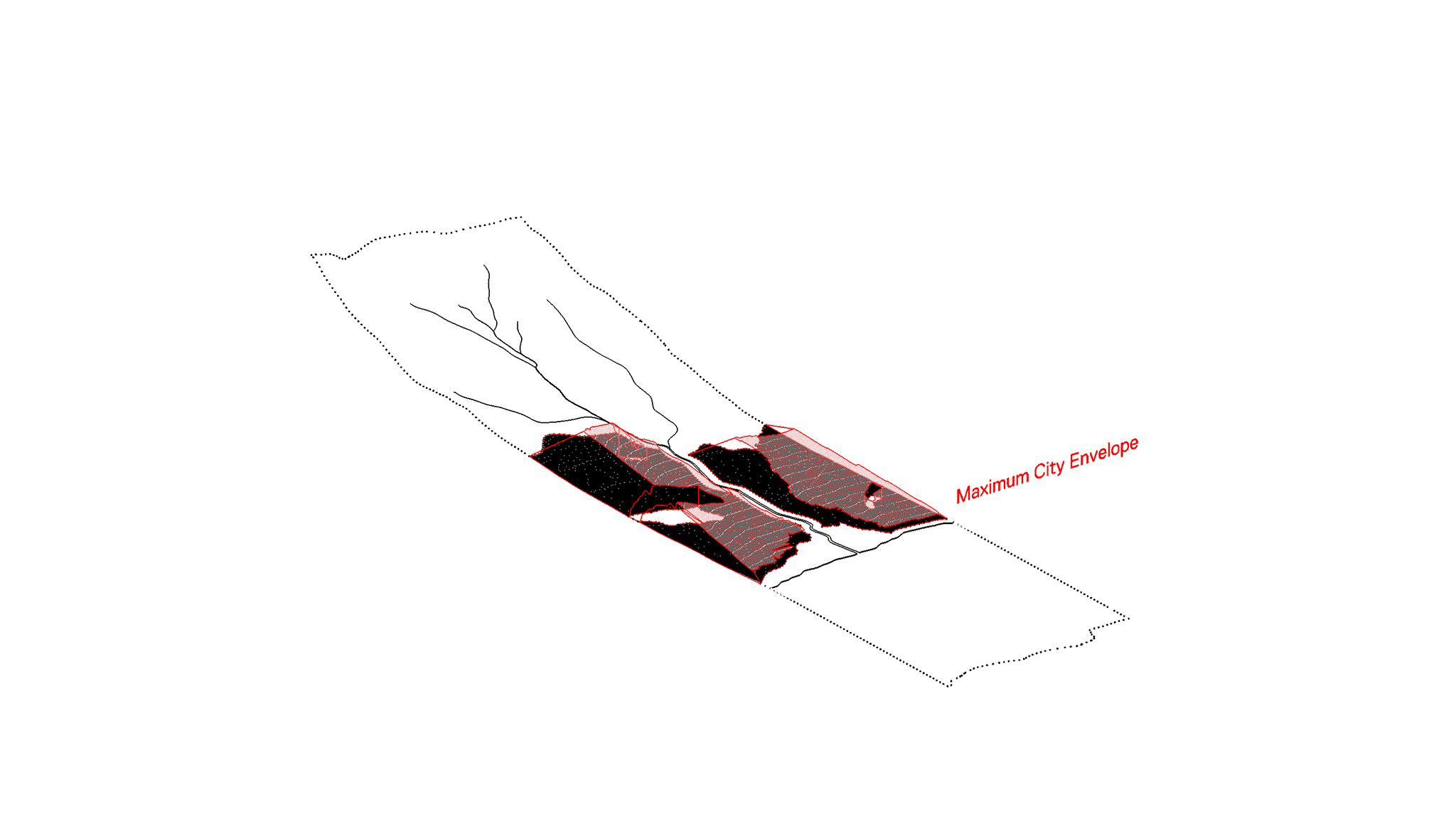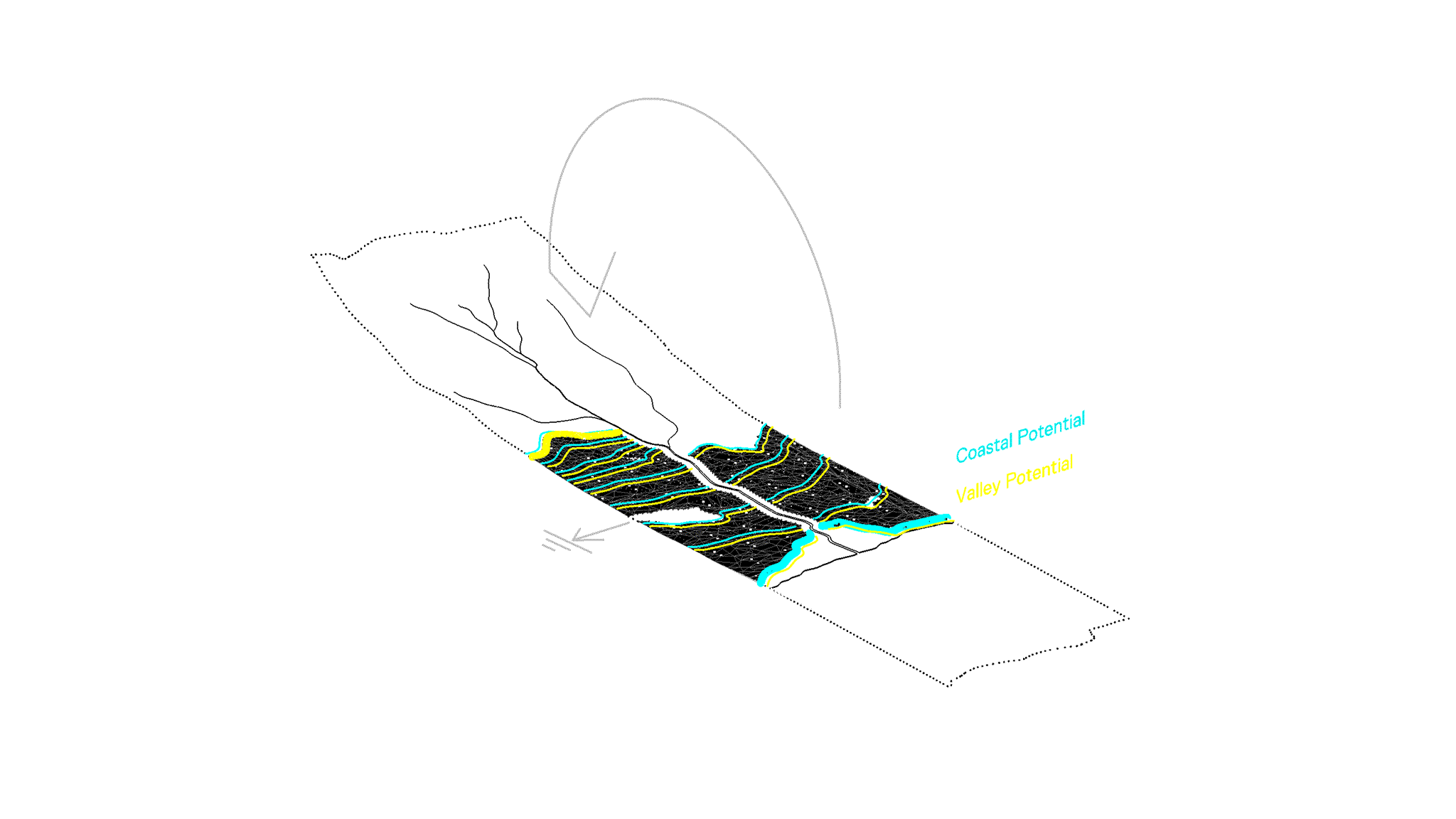IV.
Paramater Outcomes
Moving beyond theoretical recovery parameters, this section focuses on the tangible implementation of the Moku Systems Recovery Framework. Here, we examine the practical implications of our strategic approaches within the Hawaiian landscape. These outcomes, guided by our framework, represent foundational elements for a future that combines indigenous wisdom and innovative methodologies. They aim for a future where human activity aligns with and respects natural processes.
Interactive Multifunctional Land Use
The framework transcends conventional urban and rural taxonomies, advocating for a synergy between ecological hydrological cycles and anthropogenic development, thereby fostering long-term sustainability and watershed productivity.
AffordancesThis element revolves around the reinvigoration of anthropological connections with ecosystems, thereby enabling judicious harvesting of energy, water, and other resources in the context of mitigating climate change impacts.
Access
Here, the concentration is on fabricating expansive biotopes, superseding the traditional concept of 'parks.' The premise enables continuous movement between oceanic and mountainous zones, thereby facilitating profound interaction with diverse ecologies.
AcademiesThis domain utilizes the environment as an animate laboratory, engaging a spectrum of learners, educators, and practitioners in an educative process that amalgamates indigenous wisdom with modern environmental sciences.
Adapt & Adjust
This aspect underscores resilience in the face of natural or economic calamities. Strategies such as the restoration of riparian vegetation serve to attenuate flood impacts and coastal storm surges.
AlimentaryIn the spirit of sustainability, this approach rejuvenates traditional agrarian technologies, ensuring reliable sustenance sources that help preserve cultural practices and propagate values across generations.
'Ili, Nodes, & Networks
The proposed paradigm suggests pedestrian-centric communities linked by shared resources such as food hubs, educational institutions, local enterprises, and public transportation infrastructure, thereby fostering a vibrant, interconnected socio-economic matrix.
Biocultural AdjacenciesThis element underscores strategic urban planning that synchronizes population density and architectural elevation with the accessibility of natural features like streams, forests, and agricultural fields, reinforcing the biophilic connection of urban inhabitants.
Solar Envelopes
The calibrated management of sun angles, as per the solar envelope concept, serves to efficiently distribute sunlight, implement strategic shading for community areas, and guide the selection of suitable flora based on specific ecological conditions.
The calibrated management of sun angles, as per the solar envelope concept, serves to efficiently distribute sunlight, implement strategic shading for community areas, and guide the selection of suitable flora based on specific ecological conditions.
Data, Information, Resource Potential Zones
The approach evolves beyond conventional Euclidian zoning, integrating environmental data into the formation of performance-based zoning ordinances at the municipal level, thereby ensuring that urban infrastructures are harmoniously intertwined with their natural surroundings.
The approach evolves beyond conventional Euclidian zoning, integrating environmental data into the formation of performance-based zoning ordinances at the municipal level, thereby ensuring that urban infrastructures are harmoniously intertwined with their natural surroundings.
